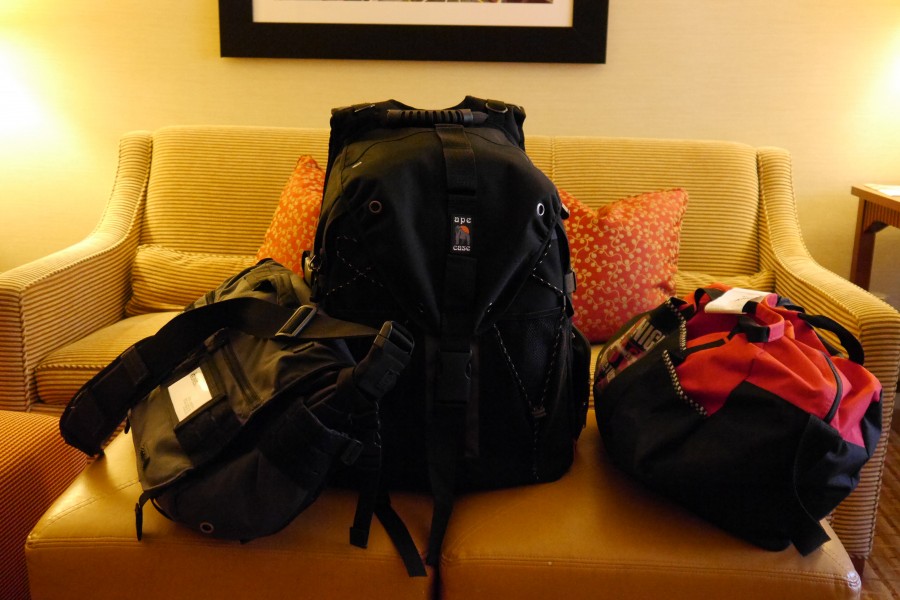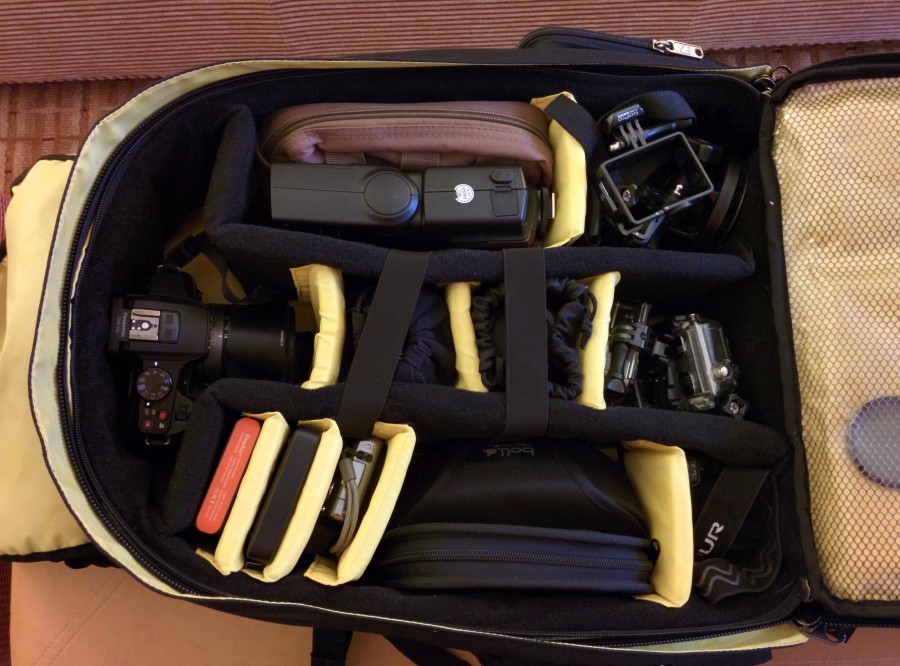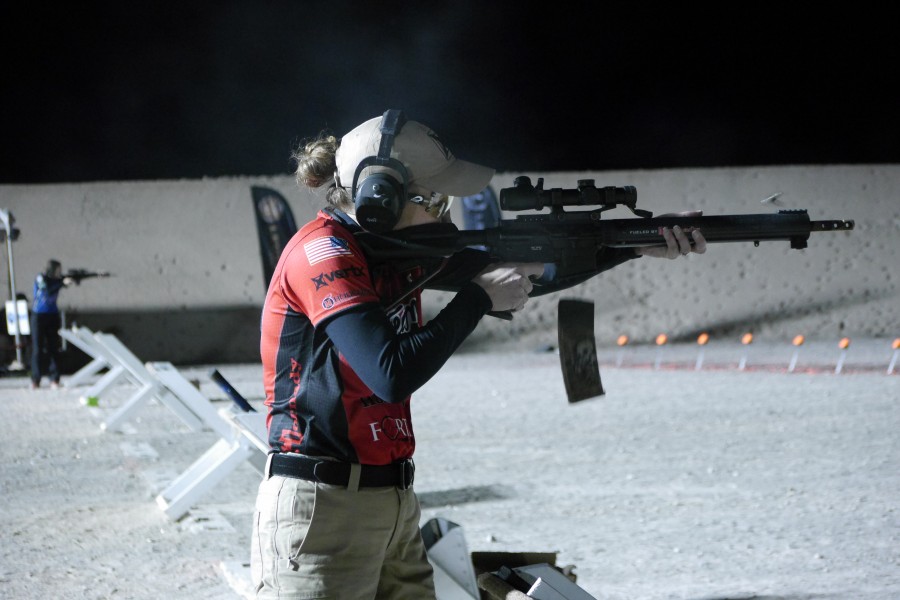I just touched down in Pheonix, Arizona to check out Timney Triggers and their new facility. The company has been making triggers ever since 1946, and while just about everyone knows the name Timney, they wanted to show off their state of the art stuff. This isn’t my first rodeo, and while I’m an old hand at the whole junket thing I’m sending another one of our writers on their first junket this week as well. For his benefit and that of other writers out there, I wanted to go a little meta and cover the finer points of how to make the most of a gun junket . . .
Be Organized
The mortal sin of a firearms writer on the go is being disorganized. And that counts for both materials and information.
The worst part about going on a gun junket is that you never really know what you’re getting into. Sure, they might have an agenda laid out before the event, but the reality of the situation never seems to match up. Being prepared for everything means bringing all of your toys along – from different lenses to various GoPro mounts – and that requires some serious luggage.
The way I organize my gear is in three bags. The concept behind my setup is that I can lose each bag in succession and still finish my mission, which is covering the event at hand. Much like ablative armor, I have ablative luggage.
Bag #1 is the most important — a small satchel that carries my Nexus 7 tablet along with a Bluetooth keyboard and notebook, along with charging equipment for all of the above. This bag contains the bare minimum gear needed to finish the job, since a camera of some sort (even if it’s on your phone) and a computer to write up the articles are just about all a blogger really needs these days.
It might not be pretty, but it’s bare-bones and lightweight so that it can stay with me literally wherever I go. Also included is something extremely important: a mobile WiFi hotspot. Believe it or not, there are still places without free WiFi access, so spending a couple bucks for a guaranteed way to post articles is more than worth it.
Bag #2 is all about the camera gear. Everything from spare lenses to spare cameras and a laptop computer (which I am using to write this article right now) for video and photo editing. Each has it’s own pocket and place. All padded, naturally. The bag is slightly larger so it doesn’t always fit in the overhead container on the smaller regional jets, but the padded nature of the bag gives me the option to gate check the bag if required. The bag always comes to the gate and stays with me at all times, though – never checked.
Bag #3 varies in size depending on how long the assignment is going to last. All of my clothes, my toiletries, and usually a hard sided box containing my concealed carry gun gets a pampered ride as checked baggage under the airplane. None of the gear is required to get the job done, so if it doesn’t appear at the other end I’m not entirely upset. Just slightly smelly.
This is just one example, and I’m sure that I could squeeze all of this into a rolling suitcase if I really tried. But to me, the convenience of being able to ditch my gear if needed and roll with just the satchel keeps me nimble when necessary. And I like that.
While bags and gear are important, the real critical item is the information. A single sheet of paper might be all that is needed, but at a bare minimum you should have a schedule of your flights and the contact information for who is meeting you on the other side. Speaking of information . . .
Know Your Expectations
Why did this company want you to come out and meet them? Answering that question is crucial to not only keeping the company happy but also being alert for things the company might be hiding or covering up.
Take, for example, the Timney trip I’m on. They have explicitly stated that the whole point is to show off their new manufacturing plant, but the subtext is showing that the 1946 vintage company is just as high tech and sophisticated as anyone else. The expectation in this case is that I’ll write about the history of the company and their new plant, and a couple articles to that effect would probably meet their expectations. But what I’m really interested in isn’t the tech – my interest is in the mentality of the company and their employees and their plans for the future. I think that’s a much more interesting story, but I’m still open to writing about their tech if there really is something interesting there.
On the flip side of that coin, while it’s only natural to write about the experience, that writing doesn’t have to be a glowing review of everything they put in front of you. They may have paid for the trip and you should definitely thank them if they did, but they can’t pay for the content. Articles need to be written because it’s a topic that genuinely interests you and has a narrative that is factually accurate, not because that’s what they told you needs to happen to be invited out again. Spending extravagant sums of money on writer junkets and shunning those who don’t write positive articles is the way Remington operates, and there’s a reason that we never get invited on their trips.
Tell the truth, in other words. Because that’s what we do here anyway.
Be Early and Prepared
No matter who is paying for the trip — the company or the publication — the same rules apply. You’re traveling on other people’s money and they are expecting you to work.
If there’s an agenda, be sure to show up five to ten minutes early at the very least for whatever events are planned. If there’s no agenda, find out when the next time you need to be present is and be sure to arrive even earlier. When I went helicopter hog hunting, I planned to arrive about an hour early just in case I got lost, and used nearly all of that time. Things will go wrong, and you need to be sure that you make that bus or make that meeting no matter what happens. The only thing worse than missing a story is missing a story where you were invited to attend because you got lost.
In the same vein, always make sure that you are over-prepared. Take, for example, the 3-gun shoot-off last year in Las Vegas. I was in a prime position right on the firing line with a great camera and the perfect lens. The only thing I didn’t have was exactly what I needed most at the time: a spare battery. I was lucky enough to snap this photo shortly before my camera failed on me for the night, which turned out to be the most important photo of the event, but I wasn’t able to cover the entire shoot because I simply didn’t have the right equipment.
As my flight instructor says, there’s nothing more useless than altitude above you, runway behind you, and air in your fuel tanks. The same thing goes for covering events: bring everything, even the stuff you don’t think you’ll need. Things change and situations evolve, and having all the tools at your disposal allows you to change your own plan right along with the situation.
Be Polite
There are some gun writers who I can’t stand to be around, and there are some marketing people who I wouldn’t mind if I never saw again. But all of those people show up at these events, and the key to getting all of the stories is being nice to everyone. Even if you have to make small talk for hours in a cramped car with someone you’d rather chuck out the window, remember that this isn’t about you — you’re covering the event for a publication. Your job depends on being nice to everyone and everyone being nice to you in return, because one of those people could be sitting on a really awesome story and you’ll never know about it if they hate your guts.
So be polite. Be professional. This isn’t high school, even though some of the newer bloggers look like they just graduated last year. Remember that you not only are there to write stories for your publication, but you’re representing your publication to the manufacturers. If you want them to work with you in the future it doesn’t pay to piss them off now.
In summary: be organized, be knowledgeable, be prepared, and be polite. Follow that outline and you’ll be good to go for whatever comes your way.








What’s your main camera, Nick?
Panasonic DMC-G6. I love the micro four thirds format because the image quality is perfectly good enough for the web, and the small size makes the camera and accessories smaller and lighter.
Okay, I’ll do it. Just send me the plane tickets.
Could be worse ,could be Bud Lite.
Laptop, check. 6 pack of long necks, check. Multiple whiskey shots, check. Left hand to lean on while asleep with eyes open, check. I’m qualified, where do I apply?
This article is the reason I love TTAG. Awesome insight on something I haven’t already read 20 articles about. Many internet thumbs up for Mr. Leghorn.
well since yo started this guide to junkets by mentioning Tiimney and their modern plant i will toss in a plug for their trigger group for the Ruger 10-22
http://www.midwayusa.com/product/1146217159/timney-trigger-guard-assembly-ruger-10-22-2-3-4-lb-aluminum?cm_vc=ProductFinding
the 200 bucks i spent for this item transformed the 10-22 from a minute of squirrel at 50 feet to a rifle with which i can knock em down at 100 yards… $200 very well spent… and yes i got the one with the red bang switch
a top quality product
I know you guys have to pay the bills, but if you’re going to have ads with sound that auto-play, can you at least make sure they have a mute button?
2nd the motion. It’s extremely annoying when I’m at work and still have the sound on from a skype call.
Also it’s spelled Phoenix.
Where is Pheonix?
Turn left at Albuquerque. Sorry, couldn’t resist.
I appreciate the article as it is timely for my up coming trip as well. Thanks and I use a Nikon 5300.
Welcome to autumn in the Valley of the Sun. You may not understand this, but trust me, be glad it’s not July.
Informative and interesting. These tips can help people in all walks of life.
“If there’s an agenda, be sure to show up five to ten minutes early at the very least for whatever events are planned.”
There is a saying where I “work” that goes: “If you are early you are on time, if you are on time you are late.”
I need six beers and a taster to work with a Mac too.
Worrying about “How to Survive a Gun Junket” sounds like a nice problem to have.
Comments are closed.